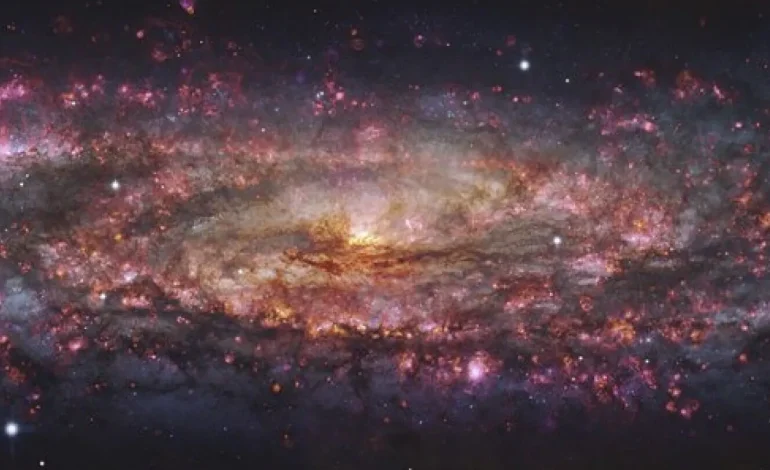New Image Captures Nearby Sculptor Galaxy in Unprecedented Detail

Astronomers have released an extraordinary image of the Sculptor galaxy — a neighboring spiral galaxy — revealing vivid detail and thousands of colors across a span of 65,000 light-years.
The image, made public on June 18, was captured using the European Southern Observatory’s (ESO) Very Large Telescope (VLT) in Chile and is being hailed as one of the most detailed panoramic views of a galaxy ever obtained.
Officially known as NGC 253, the Sculptor galaxy lies approximately 11 million light-years from Earth in the Southern Hemisphere’s Sculptor constellation. It’s classified as a “starburst” galaxy, indicating it is undergoing a high rate of star formation.
The image was created by stitching together more than 100 individual exposures taken over 50 hours with the VLT’s Multi Unit Spectroscopic Explorer (MUSE) instrument. The result is a glowing, high-resolution mosaic in thousands of shades of purple, yellow, pink, and more — far exceeding the limited color range typically seen in galaxy images.
“The Sculptor Galaxy is in a sweet spot,” said Enrico Congiu, lead researcher from the Universidad de Chile, in a statement. “It is close enough that we can resolve its internal structure and study its building blocks with incredible detail, but at the same time, big enough that we can still see it as a whole system.”
The various hues seen in the image represent different components of the galaxy: hydrogen, oxygen, nitrogen, and sulfur emissions from gases, as well as radiation from young stars and outflows near the central black hole. These differences allow astronomers to identify star-forming regions, measure stellar age, and track chemical composition.
The image also reveals a cone of bright light at the galaxy’s core, thought to be caused by energetic gas being expelled from the supermassive black hole located there.
The ultra-detailed image is more than just visually impressive — it is already serving as a valuable tool for scientific research. Astronomers have identified 500 new planetary nebulae in the galaxy — shells of gas emitted by dying stars — a number that far surpasses what is usually found beyond the Milky Way’s immediate neighborhood.
“These planetary nebulae act like mile markers in the galaxy,” explained Adam Leroy of Ohio State University, a member of the research team. “They help us confirm distance estimates and can be critical for interpreting other data.”
The discovery is notable because planetary nebulae, despite the name, are unrelated to planets and are rarely detected in such large numbers outside nearby galaxies.
In future work, the team plans to investigate how hot gases move through the Sculptor galaxy, potentially altering its structure and triggering new waves of star formation.
“How such small processes can have such a big impact on a galaxy whose entire size is thousands of times bigger is still a mystery,” said Congiu.
The research has been accepted for publication in the journal Astronomy & Astrophysics.
With input from Reuters, the Associated Press, Axios, and Space.com.









The latest news in your social feeds
Subscribe to our social media platforms to stay tuned